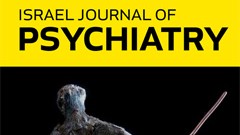
“The endocannabinoid system is up-regulated in numerous pathophysiological states such as inflammatory, neurodegenerative, gastrointestinal, metabolic and cardiovascular diseases, pain, and cancer. It has been suggested that this phenomenon primarily serves an autoprotective role in inhibiting disease progression and/or diminishing signs and symptoms.
Accordingly, enhancement of endogenous endocannabinoid tone by inhibition of endocannabinoid degradation represents a promising therapeutic approach for the treatment of many diseases. Importantly, this allows for the avoidance of unwanted psychotropic side effects that accompany exogenously administered cannabinoids.
The effects of endocannabinoid metabolic pathway modulation are complex, as endocannabinoids can exert their actions directly or via numerous metabolites. The two main strategies for blocking endocannabinoid degradation are inhibition of endocannabinoid-degrading enzymes and inhibition of endocannabinoid cellular uptake.
To date, the most investigated compounds are inhibitors of fatty acid amide hydrolase (FAAH), an enzyme that degrades the endocannabinoid anandamide. However, application of FAAH inhibitors (and consequently other endocannabinoid degradation inhibitors) in medicine became questionable due to a lack of therapeutic efficacy in clinical trials and serious adverse effects evoked by one specific compound.
In this paper, we discuss multiple pathways of endocannabinoid metabolism, changes in endocannabinoid levels across numerous human diseases and corresponding experimental models, pharmacological strategies for enhancing endocannabinoid tone and potential therapeutic applications including multi-target drugs with additional targets outside of the endocannabinoid system (cyclooxygenase-2, cholinesterase, TRPV1, and PGF2α-EA receptors), and currently used medicines or medicinal herbs that additionally enhance endocannabinoid levels.
Ultimately, further clinical and preclinical studies are warranted to develop medicines for enhancing endocannabinoid tone.”
https://www.ncbi.nlm.nih.gov/pubmed/29729263
https://www.sciencedirect.com/science/article/pii/S0024320518302352









